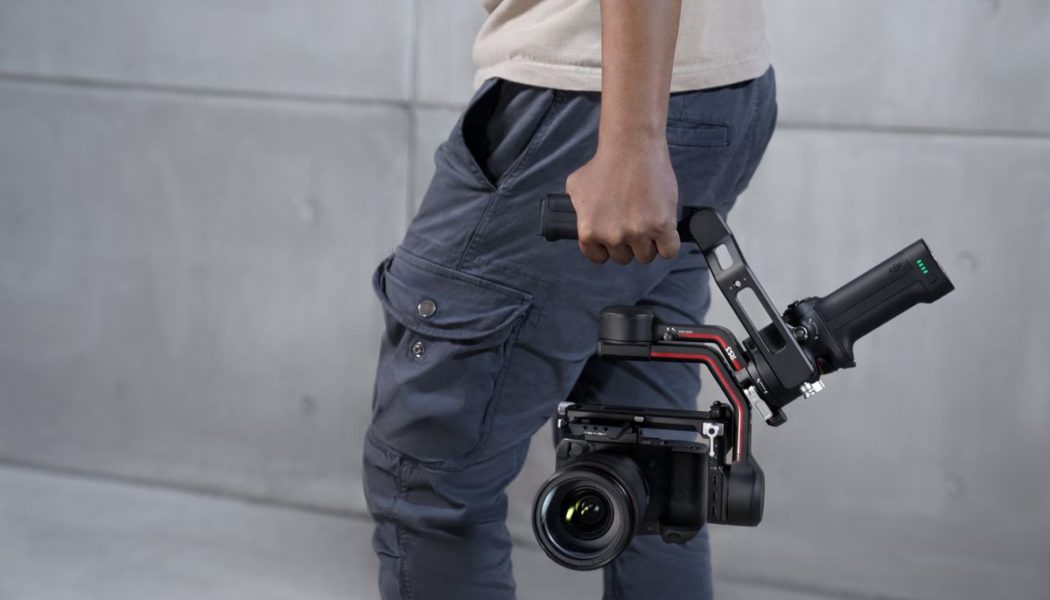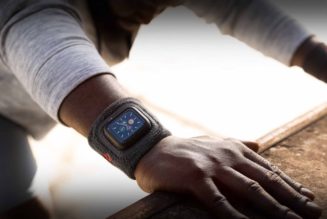Mostly known for its drones, Chinese company DJI has been expanding its reach with offerings for filmmakers in recent years. Last year the company introduced its first new cinema camera, the Ronin 4D. Today, it is announcing and releasing two new gimbals and a DJI Transmission wireless system, all of which are borrowing a few neat tricks from the Ronin 4D.
The RS 3 can be seen as a successor to the RSC 2 that DJI released in 2020. It is the smaller of the two newly released gimbals focused on getting you up and ready to record as quickly as possible. The new axis locking mechanism releases automatically once the gimbal is powered on, allowing you to get filming sooner. Along with new quick-release mounts, it should save you precious time and eliminate the need to rebalance the arms between shoots.
:no_upscale()/cdn.vox-cdn.com/uploads/chorus_asset/file/23627913/DJI_RS_3___Storage_mode.jpg)
:no_upscale()/cdn.vox-cdn.com/uploads/chorus_asset/file/23627874/DJI_RS_3_Pro___ActiveTrack.jpg)
The RS 3 also features new support for the Bluetooth shutter button, which means you won’t need to connect a camera control cable and can just trigger the record button wirelessly. DJI quotes “20 percent improved performance over the RSC 2,” which most noticeably smooths things out when filming at low angles, running with the gimbal, or filming from a moving vehicle. Like the RSC 2, this gimbal supports SuperSmooth mode, which adds extra stabilization when filming with tighter zoom lenses up to 100mm.
The new gimbal also features a much larger 1.8-inch OLED touchscreen, which should help you adjust settings on the go without the need to connect it to the Ronin app. The grip has added a physical sliding switch so filmers can toggle between pan follow, pan and tilt follow, and FPV modes.
The brand-new interchangeable battery grip with 12 hours of battery life is a slight decrease compared to RSC 2’s 14 hours of battery life. But 12 hours is still a long time, and it supports 18W PD fast charging. Props to you if you can hold the gimbal for that long.
The RS 3 weighs in at 2.8 pounds (1.3kg) which makes it just ever so slightly heavier than its predecessor (2.67 pounds or 1.2kg) and shares the same maximum tested payload of 6.6 pounds or 3kg.
But, if you think 3kg might be too little for your camera rig, then you should take a look at the DJI RS 3 Pro. It has a maximum payload capacity of 10 pounds (4.5kg) — identical to its predecessor, the RS 2 — and should be more than plenty. Although the RS 3 Pro’s arms are constructed from one uncut piece of carbon fiber, the RS 3 Pro is just slightly heavier than the RS 2, weighing in at 3.3 pounds (1.5kg).
:no_upscale()/cdn.vox-cdn.com/uploads/chorus_asset/file/23627919/DJI_RS_3_Pro___Mounted_on_car_crane.jpg)
Just like the RS 3, the RS 3 Pro shares all the features listed above: automated axis lock, Bluetooth shutter control, 1.8-inch OLED touchscreen, and the physical mode button on the grip. But there is one big difference since the RS 3 Pro borrows Ronin 4D’s lidar-focusing technology. Paired with the improved focus motor, the DJI Lidar Range Finder is capable of turning your manual lenses into auto-focus lenses. And DJI’s proprietary ActiveTrack, now called ActiveTrack Pro, promises to maintain steady and in-focus shots in more demanding situations by improving subject detection and tracking.
:no_upscale()/cdn.vox-cdn.com/uploads/chorus_asset/file/23627910/DJI_RS_3_Pro___LiDAR_Range_Finder.jpg)
The last product announced at DJI’s launch event is DJI’s wireless video solution, simply called DJI Transmission. If you’re familiar with DJI’s Ronin 4D camera, this will sound similar.
It is a transmission technology that enables remote monitoring and control of your camera, the RS 3 Pro, or both at the same time.
The O3 Pro transmission enables video casting up to 6km at 1080p at 60fps with live audio monitoring. The DFS (dynamic frequency selection) band alternates between 2.4GHz and 5.8GHz frequencies to enable smooth and interference-free transmission channels. Of course, users can also manually select their specific channels on larger sets to avoid any clashes between multiple devices.
The system comes with a transmitter that sits on top of your desired device and a receiver in the form of a 7-inch monitor. The 1500-nit bright monitor supports one transmitter with multiple receivers and two transitioning modes.
:no_upscale()/cdn.vox-cdn.com/uploads/chorus_asset/file/23627815/DJI_Transmission___Motion_based_control__2_of_2_.jpg)
:no_upscale()/cdn.vox-cdn.com/uploads/chorus_asset/file/23627827/DJI_Transmission___Integrated_power_supply.jpg)
The Broadcast mode enables an unlimited number of receivers to monitor production, while Control mode, monitoring, and remote control of devices can be done with two receivers.
The new gimbals, DJI RS 3 and RS 3 Pro, will be available today for a starting price of $549 and $869, respectively. Both gimbals can also be bought as a combo bundle that comes with a plethora of accessories. The RS 3 Combo includes an extra handle, a new focus motor, a carrying case, and more. This option will cost you $719.
The RS 3 Pro Combo bundle also adds an extended quick-release plate, a phone holder, new focus motor, Ronin image transmitter, and more for $1,099.
DJI Transmission will start selling in September of this year and retail for $2,499. If you want to buy either the video transmitter or the High-Bright Remote Monitor separately, those items will cost $1,699 and $1,099, respectively.









